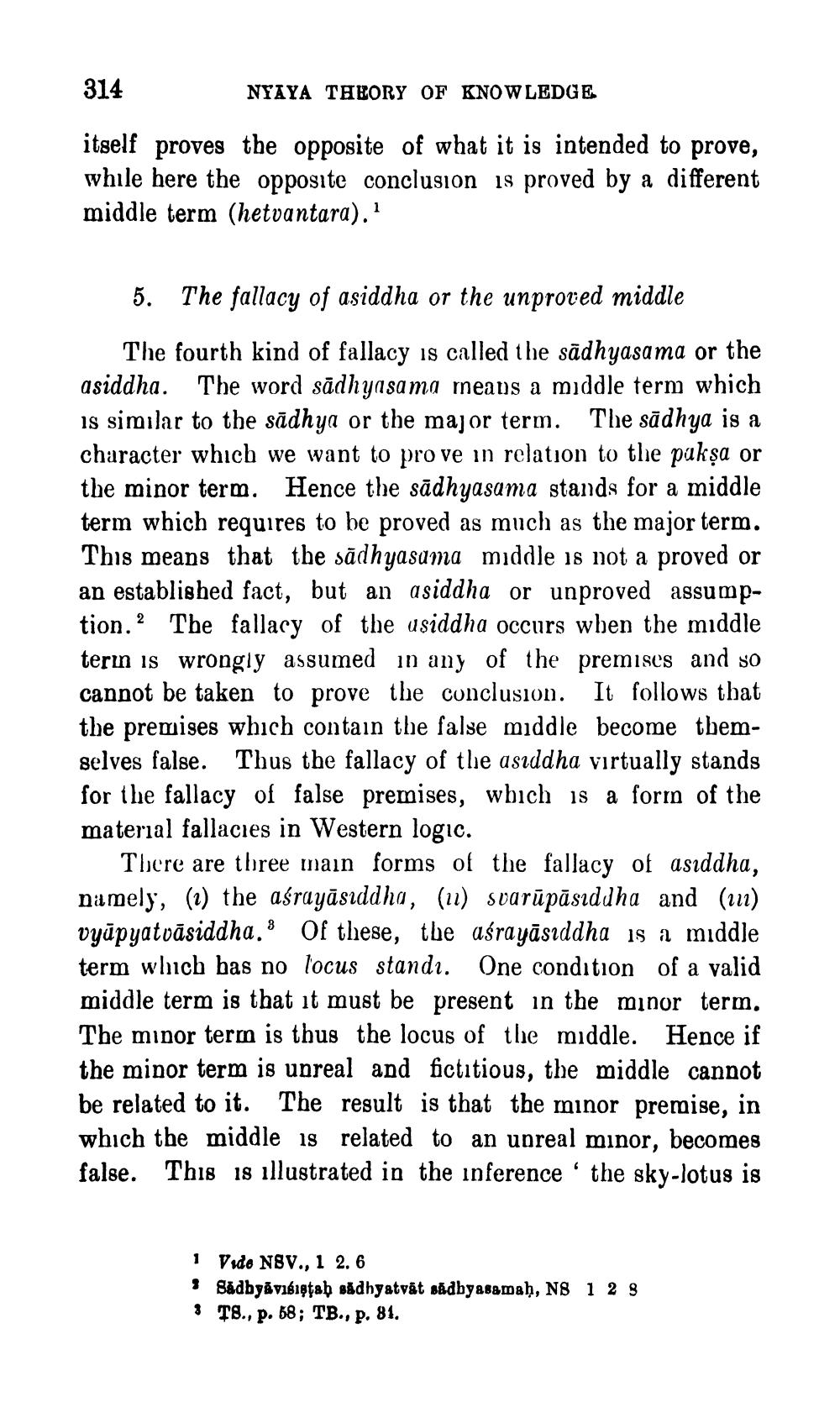________________
314
itself proves the opposite of what it is intended to prove, while here the opposite conclusion is proved by a different middle term (hetvantara).1
NYAYA THEORY OF KNOWLEDGE
5. The fallacy of asiddha or the unproved middle
The fourth kind of fallacy is called the sadhyasama or the asiddha. The word sadhyasama means a middle term which is similar to the sadhya or the major term. The sadhya is a character which we want to pro ve in relation to the paksa or the minor term. Hence the sadhyasama stands for a middle term which requires to be proved as much as the major term. This means that the sadhyasama middle is not a proved or an established fact, but an asiddha or unproved assumption. The fallacy of the asiddha occurs when the middle terin is wrongly assumed in any of the premises and so cannot be taken to prove the conclusion. It follows that the premises which contain the false middle become themselves false. Thus the fallacy of the asiddha virtually stands for the fallacy of false premises, which is a form of the material fallacies in Western logic.
2
There are three main forms of the fallacy of asiddha, namely, (2) the aśrayāsiddha, (u) svarūpāsiddha and (un) vyāpyatvāsiddha. Of these, the aśrayāsiddha is a middle term which has no locus standı. One condition of a valid middle term is that it must be present in the minor term. The minor term is thus the locus of the middle. Hence if the minor term is unreal and fictitious, the middle cannot be related to it. The result is that the minor premise, in which the middle is related to an unreal minor, becomes false. This 18 illustrated in the inference the sky-lotus is
6
8
1 Vide NSV., 1 2.6
Sadbyāvisiṣṭaḥ sadhyatvät sädhyasamaḥ, NS 1 2 8 3T8., p. 58; TB., p. 81.




